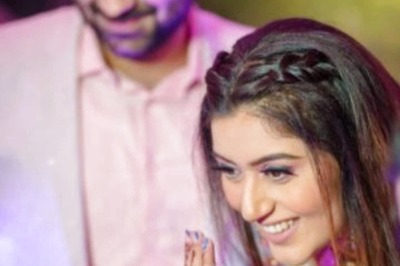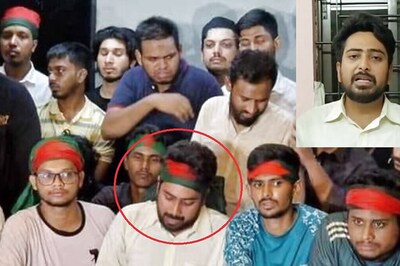
views
“Ethnic jokes are the last refuge of a bankrupt intellect.”
–Tim Dorsey
How often have we been greeted by the famous ‘Santa Banta’ jokes, or the seemingly funny ‘husband-wife’ jokes on WhatsApp group chats? Perhaps a lot more often than we can recall. While humour is a social necessity and gives us a chance to seek respite from stressful and overwhelming situations, it also serves as a vehicle for propagating sexist and discriminatory ideas among people in society that are transmitted from person to person in an array of situations.
Ethnic and gendered jokes are two of the most prominent forms of casual discrimination, which go unnoticed under the garb of humour. Ethnic jokes are essentially remarks or comments aimed at humouring specific characteristics, traits and stereotypes pertaining to particular ethnic groups. The ‘Santa Banta’ jokes, a part of the broader category of Sardarji jokes, are notorious for targeting the Sikh community, time and again portraying them as dense and dull-witted. Taking jibes at one’s communal identity is ridiculously tasteless, disrespectful, and insensitive.
Sikhs constitute two per cent of the total Indian population but are the largest contributors towards India’s defence services. As of 2016, Sikhs won the maximum number of gallantry awards since Independence — five Param Vir Chakras (PVCs), 40 Maha Vir Chakras (MVCs) and 209 Vir Chakras (VrCs). It is high time we realise that Sardarji jokes are not a licence to be racist.
Another set of ethnically racist jokes are the British accent jokes which have recently gone abuzz on social media platforms such as Twitter, Instagram and Tiktok. A YouTuber named ‘chewkz’, gained swift popularity with his “British in America” themed videos. One of the most popular ones being “A Bo’oh’o’ wa’er”, wherein a British man in the US is mocked and harassed umpteen times in various settings by Americans due to his British English accent and pressured into saying the word ‘water’ just to be guffawed at. The jokes don’t stop at just a bottle of water, extending to every aspect of his vocabulary. The discount coupon in another such video is set to expire on a Wednesday when the cashier cackles at his own impression of “Itz chewsday (Tuesday), innit?”
This poor jest is shabbily covered up with remarks such as “Nah, ‘m kiddin, man I love the British accent dude” or “Dude I’m kiddin man, I love Harry Potter” that work to trivialise the seriousness of the matter. What is even more astonishing is the sheer number of such videos, enough to compile into playlists and series. The nature of the Internet provides easy and quick access to any kind of content which is concerning because such videos have the capability of going ‘viral’ in a matter of minutes, with each share and each forward stripping us of our capability to distinguish between a joke and our sensitivity towards others’ sense of community.
Another critical element of ethnic jokes is dialect comedy. Dialect comedy relies on an exaggerated and excessively dramatised portrayal of stereotypes, usually based on ethnic humour. Dialect comedy is a form of linguistic-based racism, and is extensively used to humour and look down upon people. India is a multicultural and linguistically diverse nation where an array of accents of English and other local languages manifest. The problem arises when this diversity is not attributed to regional subculture factors but rather something unnatural that must be guffawed at.
Accents with distinct auditory differences are the easiest to target, like those of north-east Indians or south Indians. There are certain accents that are naturally more graceful sounding than others owing to their phoneme structures. The most common and noticeable example would be that of the north-east Indians, who are asked to take their “ching chong shing shong” elsewhere. Similarly, even south Indians are imitated mockingly, with the “und mund kund” of Tamil and Telugu.
The Punjabi accent being thick passes off as bold while the Marathi accent does not. The UP Hindi seems charming, while Bihari accented Hindi is supposedly unkempt.
Gendered jokes are no less than ethnic jokes when it comes to damaging the idea of gender roles. In 2019, when Cyclone Vayu threatened the Gujarat region, WhatsApp groups were profuse with helpline and safety numbers, accompanied by an ocean of the famous “husband-wife” jokes that make rounds on almost every WhatsApp group.
Relevant to the cyclonic situation then, a ‘joke’ comparing wives and cyclones emerged: “What is common between a wife and a cyclone? Both wipe away everything in their path when angry. Are you married? If yes, then don’t worry. You will survive any cyclone.” This trope of husband-wife jokes constitutes a majority of WhatsApp forwards, in which women are invariably the cause of trouble and inconvenience in men’s lives, jokes that demean the role of homemakers, jokes that endorse the fact that wives are a burden whose presence is restraining.
Furthermore, a recent Instagram trend showcasing women, especially young girls, in a maritally sexist manner, had gone viral in April-May 2022. The dialogues used in the dubbed audio follow a conversation between a male adult and a young girl.
“-Beta tum bade hokar kya banoge? (What will you grow up and be?)
-Dulhan (Bride)
-Arre yaar future ki kya planning hai? (I mean what are your future plans?)
-Mere pati ke paise udana (Spending my husband’s money)”
It is appalling how this sexist mindset has made its way into the heads of little children as well and is amusing enough to manifest as a social media trend and go viral, infesting deeper and deeper into society and the lens from which we begin to look at marriage and the nature of women. This trend reeks of sexism and goes on to tell the world that marriage is supposedly the ultimate dream of little girls, and to be a housewife means to be a spendthrift, engaging in extravagant wastefulness while the husband slogs off at his workplace. It questions a woman’s ability to earn and self-sustain herself.
Whether or not someone’s wife is working, it does not by default mean that she is resting at home, although such is the impression made by these spouse jokes. When lockdown was imposed in India from March 25, 2020, onwards, another series of memes about helping around the house being a kind of “workout” made its way onto every possible online media platform. When it comes to being at home doing these chores by ourselves, wearing the shoes of ‘just a housewife’, is when we realise the amount of unpaid labour women put in every day so that her folks can have a comfortable life.
Rather than bettering bonds, such sexist spouse jokes give rise to negative feelings and create problematic situations when none exist in the first place. Eventually what we laugh at in these jokes and trends begin to alter our perceptions, reflecting in our behaviours. More than half a decade ago, when ‘Comedy Nights With Kapil’ first aired on Indian television, it became an overnight sensation, giving the audience a change of pace from the repetitive ‘saas bahu’ serials airing dime a dozen on every possible channel.
Kapil Sharma incessantly insults women, showcased by behaviour such as calling his wife names like ‘chappal jaisi shakal’ (face like a slipper). The show consistently projects tropes of the wife being the ever-sulking nag while another ‘bahar waali’ woman is an enticing temptation. Speaking of the bahar waali trope, nothing could be as fitting an example, as Bhabi Ji Ghar Par Hain, which is a comedy show with the premise based on the daily lives of two neighbouring couples where the husbands are constantly plotting and working out tricks to impress the other’s consort. When gender relationships are portrayed in this style and falsely labelled as ‘family friendly’, does it not advocate for the sexual objectification of women?
All this humour we love to steal a laugh from, serves to perpetuate and maintain the vicious cycle of prejudices, discrimination and stereotyping by diluting perceptions of their seriousness. There is always a place, time and context for humour and if we are unsure of what implications it may have, it would be best to abstain from it in the first place. If we see or hear others making such jokes, a technique as simple as commenting “I don’t find something like this funny” or “I don’t think that joke was appropriate” can make a difference and break the chain of transmission of these ideas.
Remember, there is a very thin line between humour and humiliation. The line between parody and disparaging someone is, again, very thin. Suffice to say that while humour is indeed a form of expression, free speech cannot be a licence to divide and disparage. There are times when the best and the only solution is to say: Enough! Stop!
Yashee Jha, a multi-faceted student, is a writer and avid commentator on topical issues. The views expressed in this article are those of the author and do not represent the stand of this publication.
Read all the Latest Opinion News and Breaking News here



















Comments
0 comment